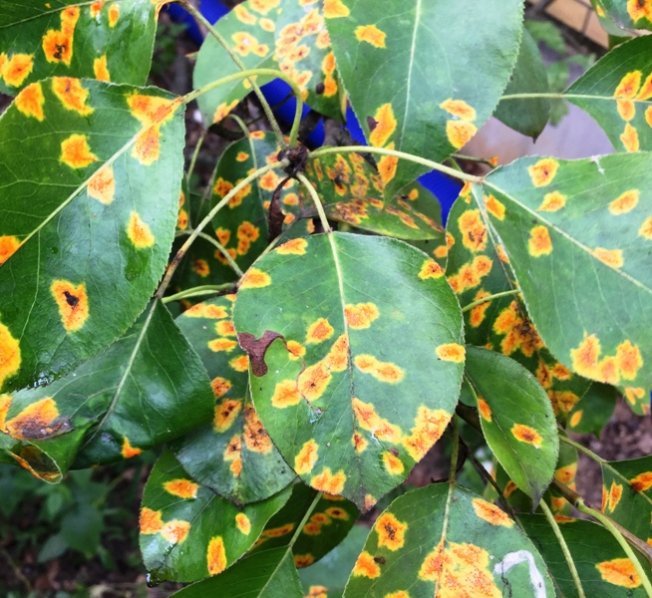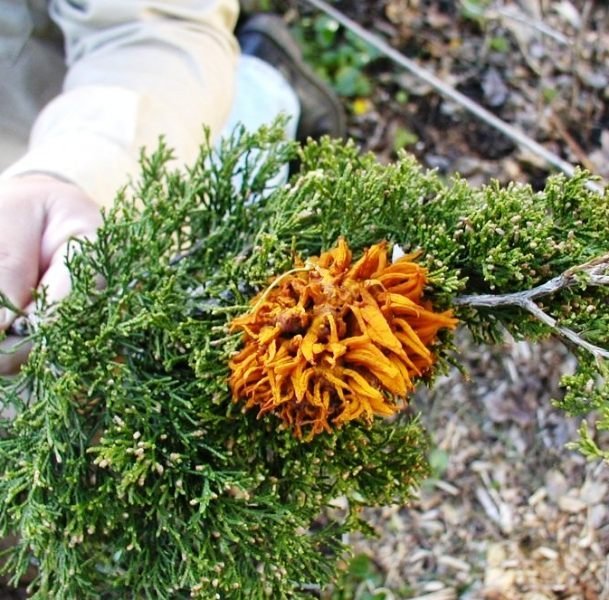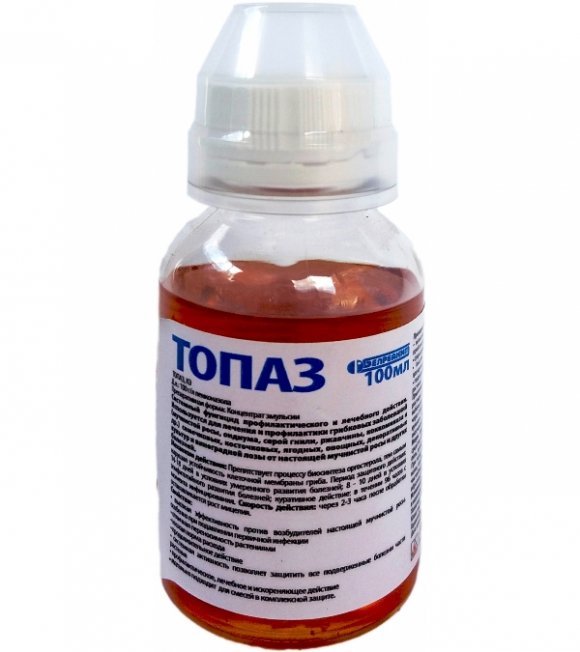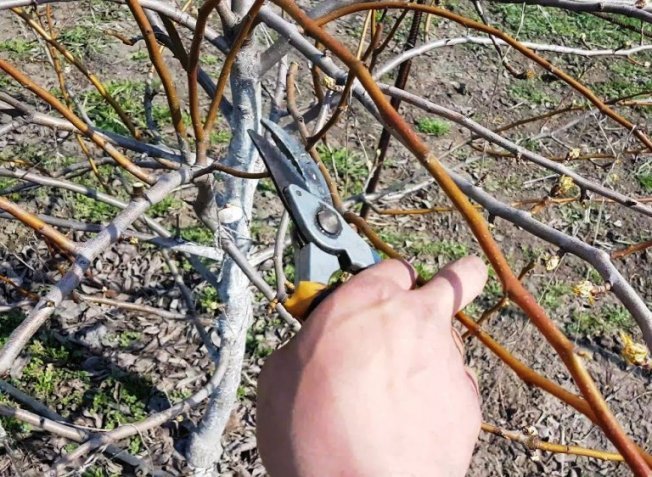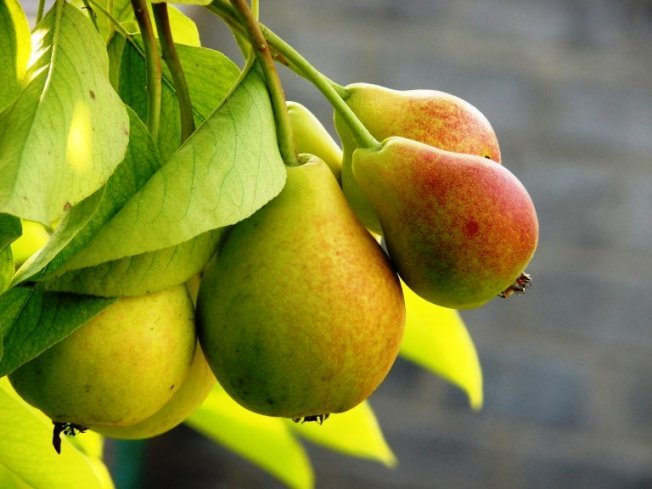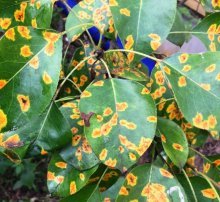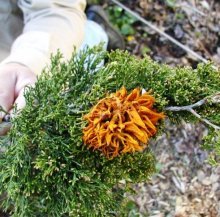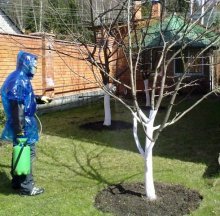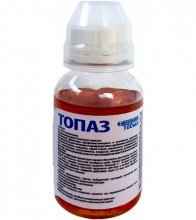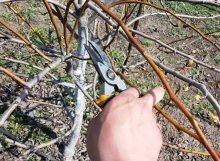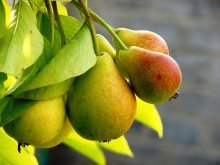Rust on a pear, means to combat it, how to get rid of it using folk methods

Growing healthy fruit-bearing trees is not an easy task. Often the symptoms of the disease become noticeable when the entire tree is already affected. Treatment in this case will be more problematic. For example, it is very dangerous when rust appears on a pear; you can get rid of the problem; for this you will need to know what means to use to combat the disease.
Content:
- What is rust, description and photo
- Symptoms of infection, how to recognize
- Under what conditions does infection occur?
- Remedies for fighting rust on pears
- What and how to spray
- Effective drugs
- Folk remedies for pear rust
- Preventive measures
What is rust, description and photo
Rust on a pear is the result of infection of the plant with the pathogenic fungus Gymnosporangium sabinae. The fruit tree is an intermediate host for the pathogen; the main host is juniper.
On infected conifers, mycelium forms; the following summer, ripened fungal spores are carried by the winds, which leads to infection of fruit trees in the area.
It is not difficult to detect juniper infected with Gymnosporangium sabinae; its needles acquire an orangeish tint and look scorched.
Rust can appear not only on pears, but also on other garden trees, so it is advisable for gardeners to know what means are used for control; only timely treatment of plants will get rid of the pathogenic fungus.
If rust is found on a pear, then the gardener should take a close look at the apple, quince, and hawthorn trees; they, too, may suffer from this disease. The danger is that a couple of months may pass from the moment of infection to the appearance of noticeable signs; during this period, the fungus will settle in all tissues of the plant.
Symptoms of infection, how to recognize
The first thing you notice is the formation of small light spots on the leaves. Over time, the spots become yellow, then acquire an orange or crimson hue. With good lighting, in the center of these spots you can see black dots, which are mycelium. Brown tubercles are formed on the reverse side of the sheets, which are a repository of spores.
If appropriate measures are not taken, the pear will lose its leaves, and there is no need to talk about getting fruit at all.
Sick plants can hardly tolerate winter frosts, and if they are severely damaged, they can weaken and die before winter sets in.
The fungus is much more dangerous for seedlings than for old trees.
Let's watch a video about rust on a pear and methods of getting rid of it:
Under what conditions does infection occur?
Promote the development of pathogenic microorganisms:
- air whose temperature ranges from +15 to + 20 C;
- humidity exceeding 85%;
- weakening of the plant by other diseases;
- planting juniper next to fruit trees;
- thickened crown of pears;
- insufficiently nutritious soil, lack of fertilizing.
Remedies for fighting rust on pears
If signs of rust are noticed on a pear in the summer, then the fight should begin in the fall, after the leaf fall ends.
All branches, even those with slight signs of fungal infection, are pruned, and the entire plant is treated with a fungicide solution. The sections are lubricated with antifungal agents and covered with garden varnish or wax.
All removed branches and fallen leaves are taken outside the garden and burned. Used garden tools are treated with an antiseptic.
What and how to spray
To treat rust on pears and other garden trees, old, proven drugs and modern ones are used, which often turn out to be more effective.
If the pear is slightly infected, you can get by using old remedies, such as: Bordeaux mixture, vitriol, copper or iron, colloidal sulfur. These same drugs can be used for preventive purposes. The concentration of preparations containing copper or iron should not be exceeded; they may be toxic to plants.
The substances contained in the new generation of preparations are aimed at blocking the growth of fungal mycelium at the cellular level, inside plant tissues.
Systemic drugs provide a good therapeutic effect: Delan, Topaz, Horus.
We should not forget that the effectiveness of most drugs appears only if the infection has occurred recently; at the sporulation stage, it is more difficult to obtain results from treatment.
Pathogenic fungi, including rust, have the ability to get used to drugs that are used against them repeatedly. Therefore, when treating rust, it is recommended to change fungicides and not use the same drug more than twice per season.
To increase the effectiveness of the preparations, a fine spray method is used, this prevents the solution from dripping from the leaves and prolongs the time of its action on fungal spores.
Let's watch a useful video about anti-rust preparations:
Effective drugs
In order for antifungal treatments to bring the desired effect, the characteristics of each product should be taken into account. All details of the use of fungicides are contained in the instructions; it is imperative to follow their recommendations.
Let's look at the basic rules for using fungicides to get rid of rust.
Horus
Contains the active substance cyprodinil and is a systemic agent. Safe for plants, people and animals, insects and fish. It is recommended to use only on young trees, whose age does not exceed 3 years, because the drug is not able to penetrate the thick skin of the leaves.
The drug can be used at temperatures from + 3 C to + 25 C. Treatment is carried out during the growing season of plants.
Colloidal sulfur
It is used for 5-fold treatment of trees, starting in early spring, before and after flowering, during the period of fruit formation and at the end of harvesting. The drug itself is safe for humans, but its compounds may be harmful.
When processing trees, personal protective equipment should be used.
Bordeaux liquid
The active ingredient is copper sulfate, the drug is available in the form of a soluble powder. It has a wide spectrum of action and is used to combat moniliosis, scab, and spotting. The maximum permissible number of treatments is 6. The drug is compatible with pesticides and is not harmful to insects and birds.Incompatible with fungicides, in particular with those that are destroyed by exposure to an alkaline environment.
Byleton
It is a systemic drug and gives a good effect in the fight against powdery mildew and rust when applied twice. Contains the active substances copper sulfate and triadimefon. Not dangerous for plants and insects, compatible with other products. Doesn't wash off in the rain.
The drug should not be used near bodies of water where there are fish. Bayleton can be addictive to pathogens; it is recommended to periodically replace it with other means.
Strobe
The drug belongs to a new generation of drugs and contains the active component strobilurin. Protects fruit trees from late blight, powdery mildew, and rust. Available in granule form, it dissolves well in water. Number of treatments per season - 3.
It does not pose a danger to warm-blooded animals and insects, and is safe for plants.
Feature: the drug can be used even during the flowering period of trees. It is not addictive and is not washed off by rain.
Raek
The drug is systemic and contains the active ingredients copper sulfate and difenoconazole. Designed for treating plants against powdery mildew, scab, rust, and late blight. It is allowed to treat plants 4 times during the season.
Available in the form of an emulsion. It is not dangerous for insects; it is moderately toxic for warm-blooded creatures. Compatible with other fungicides. It is not washed off by precipitation.
The use of the product in the sanitary zone around water bodies is not allowed.
Polychomus
The fungicide contains 20% copper oxychloride and 60% metiram. Available in the form of a suspension.It is a universal one, effective in the fight against black cancer, scab, white spot, moniliosis, and rust. The number of treatments per season should not exceed 5 times. Not harmful to plants, insects and birds. Do not use near bodies of water where fish are bred.
To know the exact amount of solution required to process one tree. You should first spray it with plain water.
Folk remedies for pear rust
Let's start with the fact that the use of remedies made according to folk recipes alone to treat pear rust will not be enough. But if you use them in combination with fungicides, the process of treating the plant can be accelerated. Folk remedies are often used for auxiliary purposes.
To prepare a marigold infusion, you will need to pour half a kilogram of inflorescences into 10 liters of hot water, leave for 12 hours, then strain thoroughly. Use the infusion for spraying trees, repeat the procedure 2 or 3 times, with an interval of 7 days.
Mullein infusion prepared with 0.5 kg of fresh mullein and 20 liters of water. It will take 2 weeks to receive the antifungal agent. After the end of the period, the mixture is filtered and 10 liters of water are added to it. Used for watering pears at the root. For an adult tree, 10 liters of infusion will be required, for a young seedling - 5 liters.
Trees can be sprayed with this infusion only after fruiting has finished.
A solution of laundry soap with ash. First, prepare a decoction by pouring 3 liters of water into 3 kg of ash and boiling the mixture for an hour. After cooling, strain the broth, add 100 g of crushed laundry soap. After obtaining a homogeneous mass, dilute it with water at the rate of: per 1 liter of mixture per 5 liters of water.Plants should be treated three times, with an interval of 10 days.
Horsetail infusion is prepared from 200 g of dry herb and 1 liter of water. Place the ingredients in a saucepan and boil for 15 minutes. The broth is dissolved in 14 liters of water and filtered. Trees are treated twice, at intervals of a week. The greatest effectiveness can be expected if treatments are carried out at high air temperatures.
A soda solution is prepared by dissolving 100 g of soda in 10 liters of water. 50 g of crushed laundry soap is also added to the bucket. The mixture can be used after the components have completely dissolved. During the season, the treatment is repeated three times, with a break of a week.
To prevent plants from getting sunburn, they should be treated in the evening or on a cloudy, dry day.
Preventive measures
Prevention of diseases of fruit trees should begin in the process of planting an orchard. And we must not forget that only systematic implementation of preventive measures will prevent the development of fungal diseases, including rust on pears.
To protect your garden from rust you will need:
- plant pears at the maximum distance from juniper;
- it will be necessary to systematically monitor the condition of the needles and leaves of plants;
- when the first signs of rust appear, remove the affected branches and burn them;
- systematically fertilize plants with potassium and phosphorus, maintain their health and immunity;
- refuse to apply nitrogen fertilizers;
- carry out thinning and sanitary pruning of trees;
- It is mandatory, for preventive purposes, to carry out preventive treatment of plants in the garden using fungicides or folk remedies.
Experienced gardeners also recommend giving preference to pear varieties that are less susceptible to fungal diseases:
- Skorospelke;
- Chizhovskaya;
- Nike;
- Autumn Dekanka;
- Ilyinka.
Breeders, working on developing these varieties, did not aim to improve the taste of fruits, they worked to create plants that were resistant to diseases. It is a pity that it has not yet been possible to obtain a plant resistant to all types of pathogenic fungi.
Rust on pear trees is quite common; the means to combat it can be different, but you can quickly get rid of the disease if treatment is started in a timely manner.

